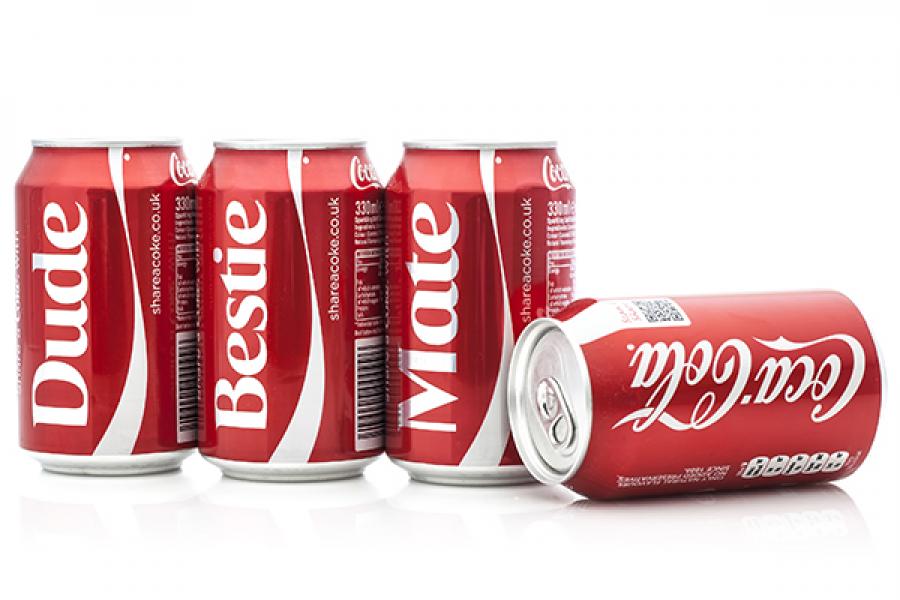
Personalisation in Marketing: How brands can get it right
The ability to treat each consumer as unique and to tailor the marketing mix to appeal to her uniquely has always been a marketer's dream
You are unique. Like everyone else.
And like almost everyone else, you probably value things and experiences that have been made especially for you.
The birthday cake with your name on it. The handwritten thank you note. The monogrammed jewelry or watch which is a treasured gift. These are cherished because they are personally meaningful. How about experiences?
Some years back, on a vacation in Paris with my husband, I stepped into a small café across our hotel for a coffee and croissant before heading out. The next morning, the owner greeted us with a smile and asked us whether we would step in to have “our usual”. We did. On the third visit he courteously guided me to “madam’s usual seat by the window” and of course, remembered our order. The personal touch left us charmed. This ability to treat each consumer as unique and to tailor the marketing mix to appeal to her uniquely has always been a marketer’s dream.
However, it has been hard to pull off at scale. That's because at the heart of it, personalization depends on collecting meaningful consumer data and using it to create experiences at every point of interaction.
It’s a lot of math but equally importantly, it’s an art. At its quantitative worst, retargeting can leave consumers feeling concerned that their every move online is being tracked to sell more stuff to them.
I bought a red handbag on an online site earlier this year. It was a gift for someone who fancies red handbags. After the transaction was complete, little did I realize how I was now fair game for relentless pursuit. The barrage of mails that followed started by suggesting more red handbag models that I could buy. Clearly, this was brute automation at work- a little application of thought would have made them realize that most women don’t buy several red handbags together. They moved on to suggesting red dresses and cosmetics to go with my bag. It finally ended with a cheesy and plaintive offer to help me paint the town red. That’s not how a shop owner would behave with a consumer up close and personal without seeming rather creepy.
Given where we are, it’s no surprise that when asked how they feel when companies customize offerings for consumers, only 42% gave a thumb up. Consumers also felt that there were too many technologies tracking and analyzing their behavior and that it’s creepy when companies target ads to consumers based on their behavior. Clearly, companies have a tightrope to walk when it comes to meeting consumer expectations of personalized experience while maintaining a respectful and trusting relationship.
Personalization doesn't come cheap and is not a pop up flavor of the month. That’s why few brands have attempted it and those that do don't always get it right.
The winners have consumer centric thinking at the very core of how they approach business in contrast to it being the shiny new bell taped on. Not surprisingly, most of them are new age brands that were born in the digital age. Here are my favorites:
- Amazon is the best example of offering value to consumers through personalization. Jeff Bezos laid down his plan clearly in 1998 when he said “In the online world, businesses have the opportunity to develop very deep relationships with customers, both through accepting preferences of customers and then observing their purchase behavior over time, so that you can get that individualized knowledge of the customer and use that individualized knowledge of the customer to accelerate their discovery process. If we can do that, then the customers are going to feel a deep loyalty to us, because we know them so well.” A look at the tools used - purchasing history, browsing behavior, wish lists and search queries- shows how the site has been designed to bring their philosophy alive. Today, that deep relationship is a huge competitive advantage.
- Few things are as personal as music. As smartphones doubled up as entertainment devices, music streaming services like Spotify set the ball rolling with personalized playlists and ease of discovery. Indian sites like Wynk, Saavn, Gaana and Hungama have gained quick popularity. Looking ahead, could streaming evolve to read a consumer’s location, time – of – day and activity to play the right music? Faster paced music for a run if the pace slackens, calmer music for a morning yoga session on your calendar. A friend’s favorite tracks when you go visiting. And your favorite music to give you company on the move as Spotify and Uber tie- up to give you a seamless, personal environment.
- Facebook is all about you and your friends. The personalized newsfeed shows you the most relevant updates of what’s up with your friends. What started as a social network is now a big chunk of the internet viewed through your personal lens. Your behavior on the platform allows marketers to serve you ads that might be of interest to you. With social logins offered by almost every site on the net now, your profile allows other sites to show you what might interest you. And of course, at the end of the year you get your own “the year that went by” video montage of photos.
All three best in class examples above have personalization built into the business model.
However, it is possible for most brands to offer value to consumers through customized products and experiences where they co create something of value. And here, the mobile and e commerce have allowed exciting new possibilities.
The Share a Coke campaign first introduced in 2014 is probably the most successful and well known example of allowing consumers to personalize their brand experience. The insight was simple – millennials who were big on self-expression loved the opportunity to put their name on one of the most iconic brands out there. And, as suggested by the clever campaign name, they dutifully shared it with friends on social media. It was one of the most successful brand campaigns and is credited with moving market share up. This year it has evolved to allow popular music lyrics on the bottle label.
That approach to personalization on packaging has been followed by other consumer product brands like Nutella.
L’Oréal Paris has been able to offer beauty product recommendations that are tailored to a consumer. Their site has a section – My Beauty Picks - where consumers go through five distinct diagnostic tools:
Skin Care, Face Makeup, Eye Makeup, Hair Care and Hair Colour. The site also serves dynamic communication and product usage tips based on the consumer data captured through the tools. Taking things a step further, offers and coupons could be tailored to the segments that emerge out of this data, helping to pinpoint actions required to help the consumer along the purchase funnel.
Similarly Nike offers customized sneakers. Oreo let consumers design their packaging for the festive season and consumers paid a premium to be able to gift cookies in wrappers designed by them.
Interestingly, retail chain Nordstrom invested in the shoe company Shoes Of Prey to let women design their own shoes. They choose their own style (heels, flats, boots etc.) and then everything from colors, patterns, material and the rest is open for the consumer to choose. If you are a woman who likes her shoes just so, the value this provides is immense.
So, should every brand personalize? Knowing the consumer is key. If the brand can provide them something they would value, the answer is yes. If not, it needs to keep looking till a unique nugget of insight is discovered. But then, that’s exactly what the business of brands is about.
- Anamika Sirohi is a marketer who loves watching brands and people. Views expressed are her own.
-
 Anamika Sirohi
Anamika SirohiThanks, that's a very thoughtful comment! Here's hoping we have more Indian examples soon.
on May 17, 2016 -
 Bindu
BinduVery insightful! Didn\'t know the immense amount of effort put behind those pesky pop up ads showing more of what you just bought or browsed through. It\'s good to learn that companies are looking at the consumers as more than a sales number. Means more choices and more say for the shopper. And thanks for the examples! Must check out some of them.
on May 13, 2016
















